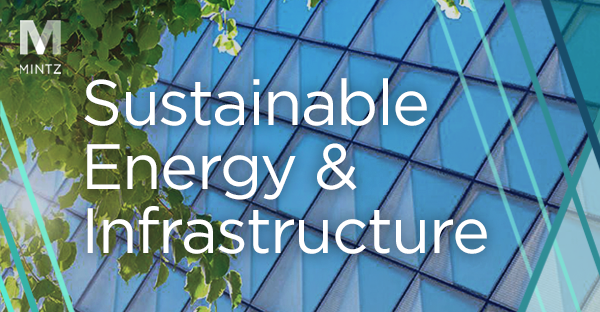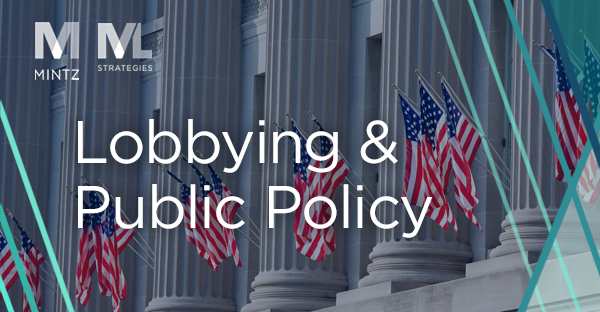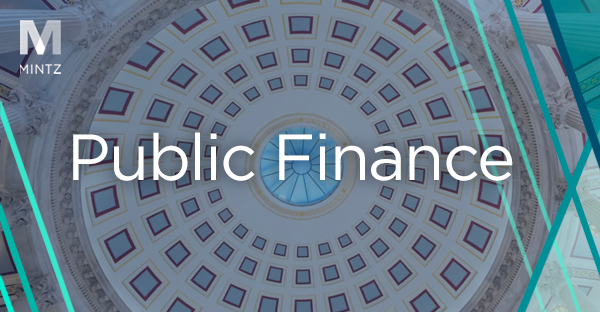
Tax
Viewpoints
Filter by:
Employee Ownership Trusts Update – The Tax Incentives that Everyone was Hoping For
November 21, 2023 | Blog | By Katy Pitch
The Canadian Government released its Fall Economic Statement (“FES 2023”) on November 21, 2023 outlining the government’s fiscal update. FES 2023 focuses on housing, affordability, and fighting climate change. However, buried in the middle of the 131-page document is a paragraph highlighting a proposed tax change regarding the recent tax rules implementing Employee Ownership Trusts (“EOTs”).
The Inflation Reduction Act is Now Law: What Does it Mean for the Clean Energy Sector?
August 18, 2022 | Blog | By R. Neal Martin, Thomas R. Burton, III
When President Biden’s signature Build Back Better Act faltered last year, many viewed the effort to be a failure. However, negotiations continued before Senate Majority Leader Chuck Schumer (D-NY) and Sen. Joe Manchin (D-WV) announced the package in late July. Nearly half of the $737 billion in revenue will be invested in clean energy and includes many direct funding opportunities in the form of grants, loans, and rebates focused on climate, energy, and energy efficiency.
Update: President Biden Signs Historic Legislation Providing Expansive Clean Energy Tax Incentives
August 17, 2022 | Blog
Read about the Inflation Reduction Act of 2022 enacted August 16, 2022, which extends and expands existing tax credits and adds several new energy tax credits to encourage the production of electricity using clean energy and the reduction of carbon emissions.
Highlights of the Section 45Q Final Regulations
January 29, 2021 | Blog
Renewables Tax Extenders Passed by Congress
December 22, 2020 | Blog
Final Section 529A ABLE Plan Regulations Are Well-Intended But Will Require Further Clarification
October 12, 2020 | Blog
Trends in COVID-Era Renewables Tax Credit Proposals
August 21, 2020 | Blog
Republican Senators Request “Start of Construction” Relief Under Sections 45 and 48 for COVID-Related Delays, Including “Continuous Efforts” Rule for Physical Work Projects
May 22, 2020 | Blog
The Opportunity Zone Program Presents Opportunity for Renewable Energy Development
January 17, 2019 | Blog | By Thomas R. Burton, III
IRS Releases Proposed Regulations Consolidating Guidance on Reissuance of Tax-Exempt Bonds
January 11, 2019 | Blog | By Christie Martin
IRS Expands Remedial Action for Nonqualified Use of Tax-Advantaged Bonds
April 13, 2018 | Blog | By Christie Martin
Preserving Net Operating Losses (NOL) Carryforward: What Are You Doing to Protect Your Company’s Valuable Tax Assets?
April 8, 2015 | Blog | By Matthew Gardella
Explore Other Viewpoints:
- Data Centers & Digital Infrastructure
- AI: The Washington Report
- Antitrust and Federal Regulation
- Appellate
- Arbitration, Mediation & Alternate Dispute Resolution
- Artificial Intelligence
- Awards
- Bankruptcy & Restructuring
- California Land Use
- Cannabis
- Class Action
- Complex Commercial Litigation
- Construction
- Consumer Product Safety
- Corporate Governance (ESG)
- Cross-Border Asset Recovery
- DEI Legal Developments
- Debt Financing
- Direct Investing (M&A)
- Diversity
- EB-5 Financing
- Education & Nonprofits
- Employment
- EnforceMintz
- Environmental (ESG)
- Environmental Enforcement Defense
- Environmental Law
- Environmental, Social, and Corporate Governance (ESG)
- FDA Regulatory
- False Claims Act
- Federal Circuit Appeals
- Financial Institution Litigation
- Government Law
- Growth Equity
- Health Care
- Health Care Compliance, Fraud and Abuse, & Regulatory Counseling
- Health Care Enforcement & Investigations
- Health Care Transactions
- Health Information Privacy & Security
- IP Due Diligence
- IPRs & Other Post Grant Proceedings
- Immigration
- Impacts of a New US Administration
- Insolvency & Creditor Rights Litigation
- Institutional Investor Class Action Recovery
- Insurance & Financial Services
- Insurance Consulting & Risk Management
- Insurance and Reinsurance Problem-Solving & Dispute Resolution
- Intellectual Property
- Investment Funds
- Israel
- Licensing & Technology Transactions
- Life Sciences
- Litigation & Investigations
- M&A Litigation
- ML Strategies
- Managed Care
- Medicare, Medicaid and Commercial Coverage & Reimbursement
- Mergers & Acquisitions
- Patent Litigation
- Patent Prosecution & Strategic Counseling
- Pharmacy Benefits and PBM Contracting
- Portfolio Companies
- Privacy & Cybersecurity
- Private Client
- Private Equity
- Pro Bono
- Probate & Fiduciary Litigation
- Products Liability & Complex Tort
- Projects & Infrastructure
- Public Finance
- Real Estate Litigation
- Real Estate Transactions
- Real Estate, Construction & Infrastructure
- Retail & Consumer Products
- Securities & Capital Markets
- Securities Litigation
- Social (ESG)
- Special Purpose Acquisition Company (SPACs)
- Sports & Entertainment
- State Attorneys General
- Strategic IP Monetization & Licensing
- Sustainable Energy & Infrastructure
- Tax
- Technology
- Technology, Communications & Media
- Technology, Communications & Media Litigation
- Trade Secrets
- Trademark & Copyright
- Trademark Litigation
- Unified Patent Court (UPC)
- Value-Based Care
- Venture Capital & Emerging Companies
- White Collar Defense & Government Investigations
- Women's Health and Technology





